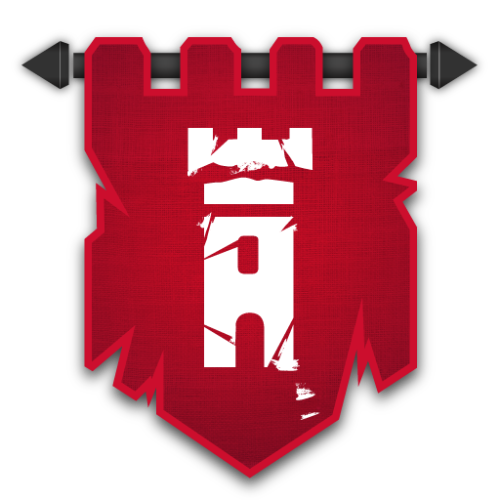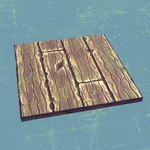The Build Surface is a procedural block that requires Advanced Building to use - it is a panel which can take any shape with three or four corners, and can be bent and curved with the Advanced Building tools.
Advanced Building needs to be turned on to place it.
Press [F] while hovering over the block to flip the texture.
Press [R] while hovering over the block to rotate the texture.
Settings[]
| Parameter | Default Value | Range | Conditions |
|---|---|---|---|
| Material | Wood | Wood, Glass | - |
| Use Paint | False | Boolean | Wood only |
| Aerodynamics | True | Boolean | Wood only |
| Collision | True | Boolean | Hidden in vanilla |
| Mass | 0.0 | 0.0 - 10.0 | Hidden in vanilla |
| Tint | 1.0x | 0.0x - 1.0x | Hidden in vanilla; Glass (no skin) only |
| Saturation | 0.6 | 0.0 - 1.0 | Use Paint is true |
| Luminosity | 0.5 | 0.0 - 1.0 | Use Paint is true |
| Hue | #7F3232 | Colour code | Use Paint is true |
| Thickness | False | Boolean | Hidden in vanilla |
- Collision, Mass, Tint, and Thickness are shown by default with Build Scaling Tools.
- By default, setting Mass to zero will make it use its default procedural mass. However, setting it to some extremely small non-zero value will give it Zero-Mass effects.
Usage[]

Creating a build surface is as simple as placing the corners like any other block. Four corners can be placed; you can create a four-sided shape, or you can create a triangle by placing the last corner on top of the first.
If you place a new corner on the corner of an existing surface, the new surface will weld to it. If the other surface is curved along that edge, the new surface will follow it.
The 'grain' of the surface will point towards the first edge (on a four-sided shape) or the first corner (on a three-sided shape) placed.
Hold Ctrl to disable snapping to the placement grid (and following curves on other surfaces).
The placement grid will be centered on the last node placed. It does not move if you undo the node placement - by placing and undoing you can shift the grid closer to where you want it.
Large bracecubes and lots of surfaces will create a lot of lag. Avoid this if possible.
Bending and Moving[]

If Advanced Building is enabled, the grid size can be changed by adjusting the step size of the translate tool, the corner nodes (green) can be moved, and the edge nodes (white) can be moved to create curved shapes (following a Bézier curve).
Press Ctrl+B to detach surfaces from other surfaces.
If two nodes are moved to less than 0.05m apart, they will merge. This can be disabled with Object Explorer.
Its nature as a procedural block makes it incredibly attractive for bodywork on machines of all kinds; it allows shapes previously considered impossible, and makes expensive shapes like triangles cheap. For example, where an aircraft wing may have taken fifty blocks, only five build surfaces may be needed.
Folding[]
One disadvantage of build surfaces is that their corner nodes stick to things (including other surfaces). This makes attaching moving parts (like control surfaces, doors, etc.) difficult, especially on curved faces.
This can be worked around by moving the edge nodes out across the corner nodes.
This limits bending of the block along the axis of the fold, but this is a worthwhile tradeoff for the increased possibilities.
There are some visual glitches involved with this method, which can be hidden somewhat by using skins and low thickness values.
Material Properties[]
There are currently two materials, with properties listed below.
| Material | Density | Mass Range | Break Force Base | Break Force Multiplier | Health |
|---|---|---|---|---|---|
| Wood | 0.3 | 0.1 - 900.0 | 1000 | 9000 | 2 - 8 |
| Glass | 0.3 | 0.1 - 900.0 | 500 | 2500 | - |
- The block's mass is calculated by multiplying density with the volume of the surface's colliders (if the hidden Mass slider is set to 0 - otherwise it uses the slider's value).
- The break force of the block's joints is calculated by multiplying the block's mass with the break force multiplier and adding the base.
- The block's health is dependent on the surface area.
The wood material allows a colour to be specified by the player (with the Paint option).
The glass material allows a tint level to be specified by the player, if it isn't skinned. This decreases shininess and makes the glass darker.
Thickness[]
The block's visual thickness can be set, which is useful for reducing visible seams and chunkiness. This is a purely visual option and does not affect the block's colliders, mass, etc..
The option is Hidden in vanilla, much like Smooth Surface Blocks. A mod such as Block Transform Mapper is required to unhide it.
Thickness changes save and load in vanilla. Mods are only required to set it.
It is also possible to scale the block to achieve the same effect, provided you use the mass slider to set the mass instead of leaving it as default.
Strength[]
The higher the mass of the surface, the stronger it gets - it's possible to make it much stronger than other blocks provided you have mass to spare (an 8-mass surface is as strong as a Log). While possible to set the mass of the block by scaling it, it's far more convenient to use the mass slider (which doesn't require you to compromise between mass, joint size, and visual thickness).
Surfaces are quite brittle, and sometimes the required mass is too much. There is a trick for preventing bodywork from shattering, which takes advantage of the fact that surfaces only break if their own connections to other blocks break - not the other way around. By:
- only connecting the surface bodywork via the secondary joints of Smooth Surface Blocks (the surfaces must not connect the other way around!)
- making those Smooth Surface Blocks thin and low-mass
- making the surfaces colliderless (as necessary)
it's possible to reduce breaks while keeping mass down by giving the body a way to absorb the force of an impact rather than just eating all of it at once and shattering.
Aerodynamics[]
The block's aerodynamics are mostly drag, and ramps up quickly. For normal vehicles this has limited utility, mostly for trimming and stabilising. However, the block's aerodynamic force scales with the unscaled area of the surface - if the surface is scaled down without moving the nodes, it can produce ridiculous amounts of force.
Technology[]
The block's adjustable mass and procedural qualities make it useful for some exotic applications:
- Contacting a zero-mass block can cause an explosion, so technologies like FNS and INROB benefit greatly from having a colliderless zero-mass block.
- Zero-mass surfaces can connect to multiple zero-mass blocks. This is particularly useful for stabilising INROB connections.
- Their aerodynamic drag can be cranked up to ridiculous levels, making them useful for stabilising low-speed inline FNS efficiently and lifting aircraft of extraordinary weight.
Gallery[]
Trivia[]
- Currently, using a skin with the glass material does not work properly; it instead takes on the wooden material.
- This block has the dubious honour of simultaneously having both the weakest and strongest joints in the game - it can go as low as 500, and in theory as high as 8,101,000.
|
| |
|
Joints ( | |
|
| |
|
| |
|
| |
|
| |
|
| |








